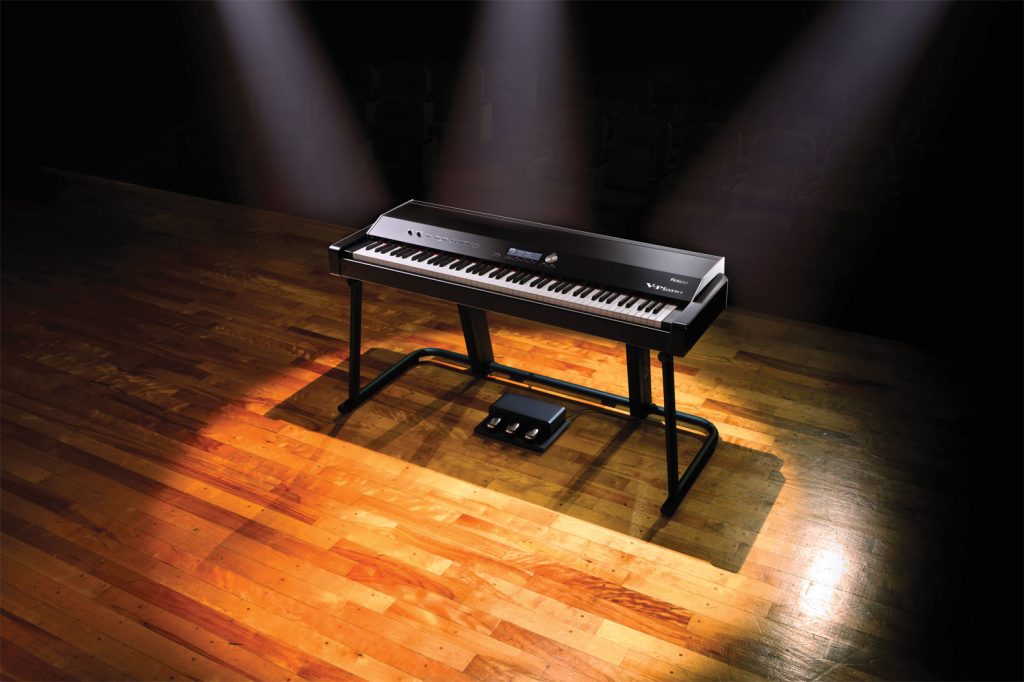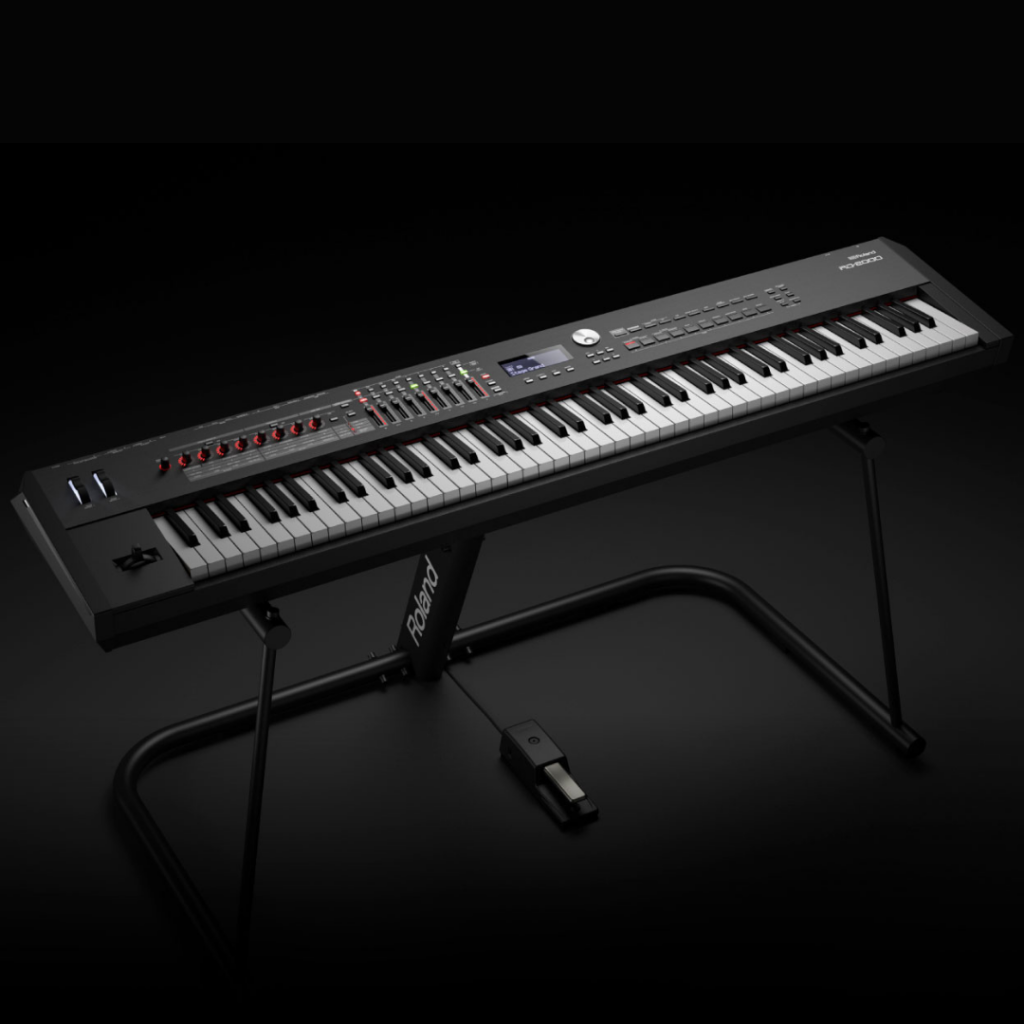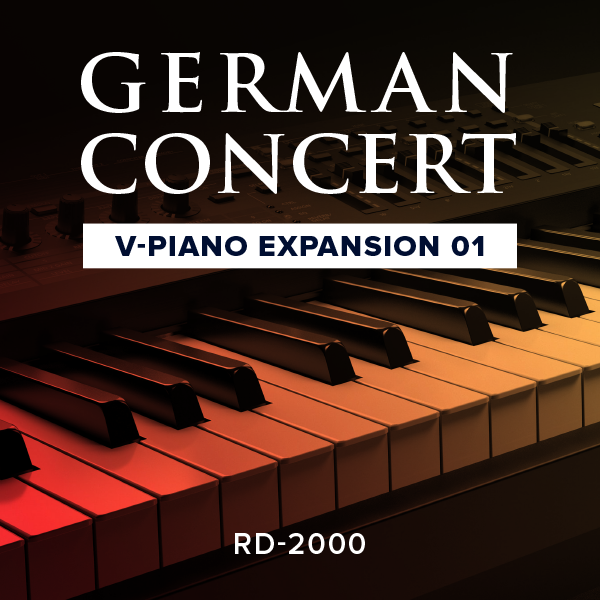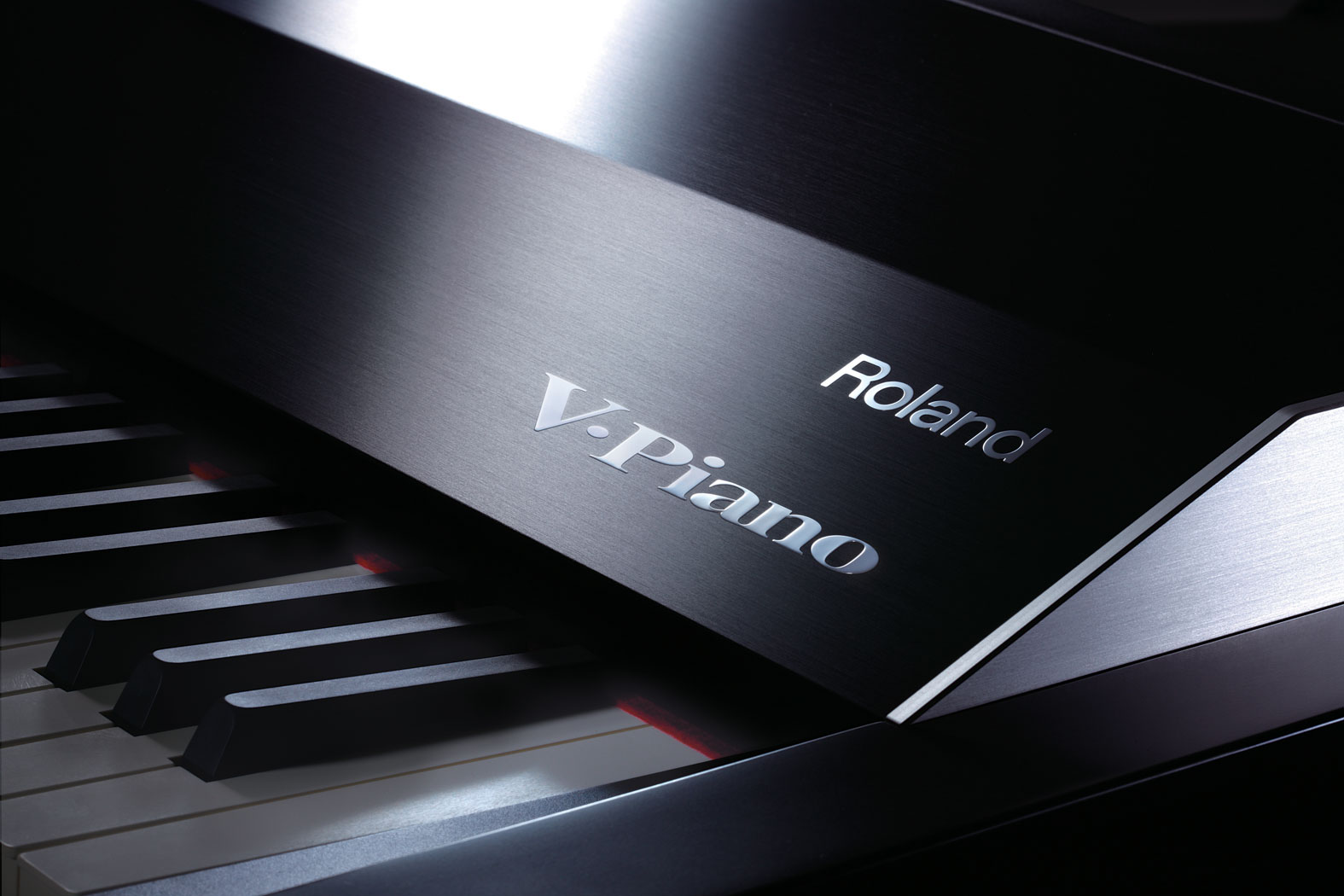Over the past half-century, Roland has created a wide breadth of influential technologies and global firsts. One perfect example of this legacy is the revolutionary V-Series, including V-Drums, V-Guitar, and V-Synth, culminating with V-Piano. Initially introduced in the instrument of the same name, V-Piano reset the game upon its release. Acclaim came from players across genres, including Jonathan Cain of Journey, George Duke, and Japanese classical pianist Yukio Yokoyama. The latter famously declared, “If Bach or Mozart had access to the V-Piano, they’d have written their famous works very differently.” Former Roland engineer Tadao Kikumoto takes us behind the scenes of this unique approach to digital-piano synthesis, offering a wealth of knowledge, perspective, and philosophy.
Virtual Origins
Describe how the concept of V-Piano came about. Was it an evolution of existing technologies within Roland?
Before we talk about the V-Piano, let me start by discussing the V-Series. At that time, Roland was thinking about an answer for the sound source to develop next to PCM sampling. This led to the development of the V-Series products, with the V-Guitar being the first model.
Roland was trying to create new virtual instruments—with the critical concept being “virtual.” We kept thinking about virtual in our minds as we were developing V-Drums. With other companies’ instruments, it was difficult to emulate non-linear and stochastic complex systems. Therefore, people had difficulty creating a synthesis engine enabling sound. They had to rely on methods like adding noise to the signal.

"The V-Series technology concept follows a holism paradigm, which combines uncorrelated but essential sound components to create synergistic effects."
A New Vision
In what way was the V-Series unlike what came before it?
Instead of playing string instruments on a keyboard, the V-Guitar used the guitar as its controller and the string signal to emulate various plucked string instruments. We didn’t have it in mind to play a wind instrument or piano on the V-Guitar or play guitar on the keyboard. Nevertheless, these exploratory opportunities led to V-Series.
With its layered modeling, how did V-Piano differ from PCM sampling?
The V-Series technology concept follows a holism paradigm, which combines uncorrelated but essential sound components to create synergistic effects. Specifically, for V-Piano, the piano sound is divided into three strings first. In addition, the thump impact sound produced by the frame and body is isolated in the high-frequency range and then resynthesized.
We precisely separated and modeled the three strings into three partials. When we asked a well-known acoustic piano tuner to test it, it impressed me to see them tune the V-Piano using the acoustic piano method. After producing these three-string models, we created other partials individually. Finally, we made a supplemental virtual soundboard and combined it with the above component objects. This is the COSM technology that we have had since V-Guitar mentioned above.
COSMic Influence
How did COSM technology influence the V-Piano development process?
COSM is a paradigm or a technological concept. Since the D-50, we’d been pursuing analytical synthesis. This breaks sound into crucial elements, synthesizes each component as a partial, and combines them to produce synergies greater than the sum. COSM, or Composite Object Sound Modeling, and Component Object Synergy Modeling is the concept to realize this method. The goal was to create what I call Aesthetical Modeling. This goes beyond the limits of physical modeling.
"Since the D-50, we'd been pursuing analytical synthesis. This breaks sound into crucial elements, synthesizes each component as a partial, and combines them."
String Theory
Tell us about the famous V-Piano silver string sound modeling.
V-Piano has a silver string sound program. In reality, with a silver string, the silver’s specific gravity is larger than copper, so the hammer that hits the string must also be larger. As a result, the key touch becomes so heavy you cannot play the piano with your fingers. It’s impossible to realize this kind of unrealistic design in the real world.
Conversely, lengthening the string by thinning it and increasing tension will detract from the subtle harmonization of piano-specific harmonics. What people are asking for with this physical model is the heavy, thick, glittering sound you expect from antique silverwork.
It is human to listen to the sound. Up to that point, we’d developed COSM based only on the instrument’s object–the objective entity. After that, we began to focus on the subject–the subjective entity–and created a model that responds to those sensitivities and aesthetics. This was Aesthetical Modeling.

New Positions
Where did the idea of intelligent multi-channel audio to emulate the player’s position come from?
The multi-output idea came from trying to play back the sound through multiple different PAs. We realized the sound the performer listened to differed from the sound heard by the audience.
Who was a part of the original V-Piano team, and what did each engineer bring to the unit?
It was a big project that involved many people, including Atsushi Hoshiai. For me, it was an unfinished graduation assignment at Roland.
"We realized the sound the performer listened to differed from the sound heard by the audience."
Challenges and Input
What were some challenges in developing the V-Piano modeling technology?
It was difficult to analyze the sound and separate it into the components that make it. For example, how to combine partials with a soundboard, how to separate them, and how to play back the results of the analysis was very difficult.
Were there artists who offered guidance or tested the evolving technology?
There was no one. If there were, we would have even been able to deepen the Aesthetical Modeling further. The sound source technology at that time already had potential. However, unlike LA Synthesis, sound creation with V-Piano utilizes analytical synthesis. It wasn’t easy to realize without understanding advanced signal theory. As a result, we could not get outside help as we did in developing the D-50. The challenge of creating an environment that integrates aesthetics and technology and delivers it to ambitious artists and users remains open for the future.
"Vintage is a respect for rich, sophisticated cultural heritage. Vanguard proposes new expressiveness that doesn't exist."
Impact
What is the continuing legacy of V-Piano?
Before beginning the ultimate V-Project, which was piano, I consulted and decided the “v” in virtual refers to two aspects. These are vintage and vanguard. Vintage is a respect for rich, sophisticated cultural heritage and the product values markets and users demand. Vanguard, on the other hand, proposes new expressiveness that doesn’t exist. It is also the Roland mission: “We Design the Future.”
Continuing to offer V-Series products aligns with the vintage idea. For example, until creative users like Afrika Bambaataa and Arthur Baker discovered the value of the 808, 303, and 909, those instruments had been unpopular, out of production, and sold cheap. We are still waiting for artists to appreciate the V-Series sounds created with our imagination and creativity while staying close to vintage. When that happens, they will be not just popular musical instruments but game-changers to create new genres of music. Vanguard is waiting for such heroes to appear.
V-PIANO HISTORY
V-Piano
The original V-Piano won praise from the world’s finest pianists. With its innovative approach to digital-piano synthesis, the V-Piano soared beyond the limits of previous sample-based instruments.


V-Piano Grand
Built into an elegant grand-piano cabinet, and with a unique, multi-channel sound system that reacts naturally and intelligently to your performance, the V-Piano Grand expanded on the promise of V-Piano technology while adding a new level of elegance and style.
FANTOM
FANTOM is a new kind of creative hub made for rapid production and expressive performance. Its sound engine combines ZEN-Core, SuperNATURAL, and V-Piano technologies for unique sounds and intricate performance setups and dynamic workflows.


RD-2000
Combining the traditional RD-series appearance with elements of the V-Piano, the RD-2000 embodies both tradition and innovation. It’s designed from the ground up with the working pro in mind, with careful consideration of the details essential to performers.
German Concert
This expansion for the RD-2000 Stage Piano uses V-Piano technology to add a piano with character of a German concert grand. Adding new expressions, the modeling technology brings the instrument to life under your fingers, delivering nuanced playability and personalization.








